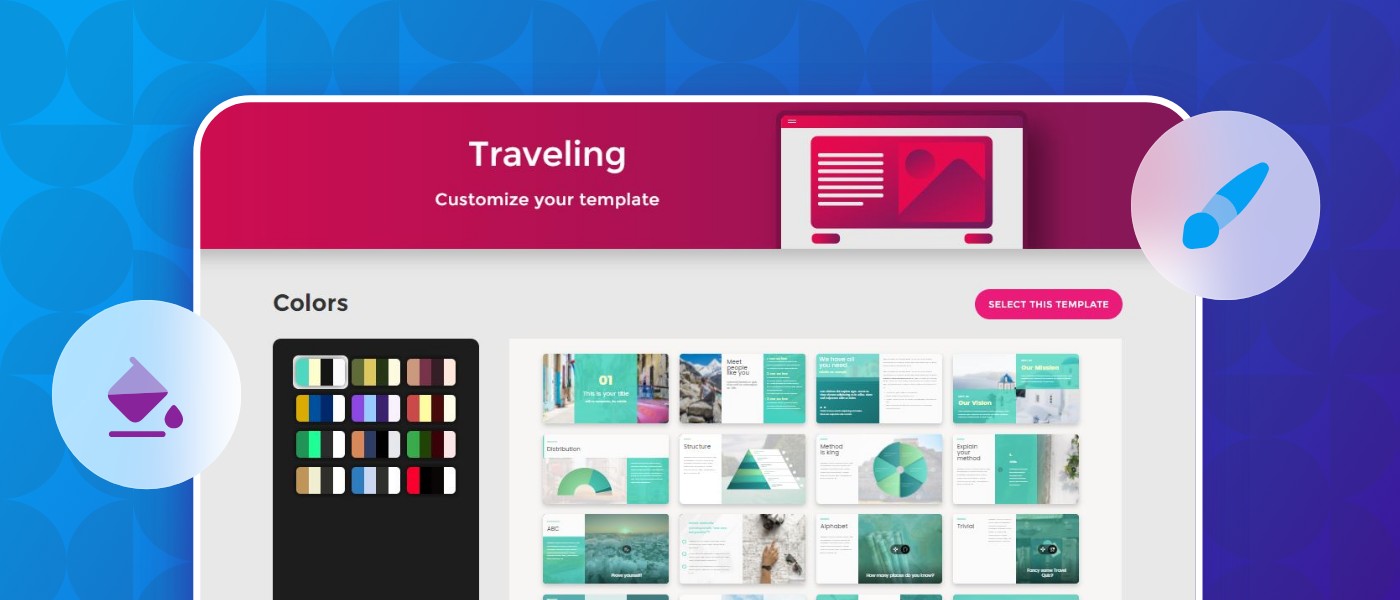
WHITEPAPER
How to take your in-person training online with the right authoring tool
October 11, 2024

Table of contents
In the age of digital learning, videos have become an indispensable tool, transforming the way we access knowledge. Through a video, it is possible to present information in a more engaging and consistent way, generating a significant impact on our ability to learn and retain information.
This trend has found fertile ground on social media. However, it is in the field of online education where it is gaining more and more popularity every day for its ability to simplify complex concepts, make them more digestible through visual explanations and encourage viewer participation. That is why in this post we want to talk to you about video e-learning. Stick around and find out what it is, its benefits, the different types of learning videos out there, and how to make the most of its potential.
The use of videos in the field of learning is nothing new. But what began with a classroom full of students gathered around a television and a VHS player, has now become a worldwide phenomenon. Currently 92% of internet users watch a video online every week, explanatory videos, tutorials and educational videos being the most popular among members of the Gen Z.
In the field of training, video e-learning is an educational methodology that uses videos as the main teaching tool. It is an approach that combines visual and auditory elements to create a dynamic and engaging learning environment, which facilitates the understanding and retention of information.
Through videos, students have access to a wealth of educational resources, such as tutorials, hands-on demonstrations, simulations or lectures, allowing them to learn at their own pace, anytime or anywhere.

If there is one thing that we training managers often ask ourselves is – how can we capture the attention of students among so many elements competing for their time? To answer this question, it is enough to look at social networks such as YouTube, the largest open platform for audiovisual content and the second most visited website worldwide, with more than 2,500 million active users.
And these figures are not surprising, as research points to video content having a 95% retention rate compared to just 10% retention for text content. This data highlights the effectiveness of video e-learning in facilitating deeper and more lasting learning. But beyond its effectiveness, video e-learning offers us other opportunities, such as making content more flexible, adding subtitles and translations into multiple languages to eliminate language barriers and reach a more global audience.
In addition, the videos can be played as many times as needed, which is useful for adapting learning to different styles and paces. Not to mention the ability of videos to connect people through narrative and emotions, which makes them ideal for capturing interest and maintaining motivation.
Video e-learning is not limited to virtual classrooms, its scope extends to various areas, proving to be a very versatile educational tool. From formal education to entrepreneurship training and continuing professional development, video-based learning facilitates access to knowledge by adapting to the needs of each context.
In education, videos have become a support for educators when it comes to sharing complex concepts or conducting practical demonstrations that would be difficult to replicate through traditional teaching methods. Videos are not the ideal complement to enrich lessons, but over time new ways of learning have been generated that bring teachers and students closer together without the need for a physical classroom.
In business training, video e-learning has also proven its value. Through videos, companies can coach their teams on a variety of skills, operating procedures, regulatory compliance, and more. In this sense, videos can fulfill two roles: that of being the centerpiece of training, and that of acting as a support tool. Each company must decide how to integrate this methodology into its business training program, but some of the most common uses are the onboarding of new employees, product or service training, and e-learning courses for professional training in various areas.

This methodology has not only transformed the way companies train their employees, but also offers several advantages that are worth knowing:
Including training videos in your e-learning processes brings many benefits, but you can maximize the impact by considering the following points:
You already know the full potential of videos and the advantages you can obtain through their use in business training. However, you should still know the different types of didactic videos that you can integrate into your training:
These types of videos usually show an expert on a topic. Although the focus is usually on the speaker, many of them add images, graphics, or any visual element that helps them share information better. A common example of these types of videos are TED talks, lectures, or webinars.

Unlike the previous ones, the focus of these videos is on a computer screen, rather than on the speaker. Through them it is possible to show a group of people how to complete a process or carry out a task while it is being performed.
It’s almost as if people will look over your shoulder at what you do on the computer and although they will mainly look at the screen, in some cases it is possible to include a recording of the face of the person presenting it and it is always advisable to include an audio overlay.
These kinds of videos are quite common and ideal for illustrating a concept or a process that is often difficult to explain without visual support. Through animations, it is possible to move users anywhere and show them how to do almost anything. For example, an animated video can show employees the right way to recycle in the office and what happens to materials without having to move them to the recycling plant.
One of the favorites for employee training. These are short videos of between 1 and 3 minutes, which provide valuable information on any topic but in a concise and focused way. This format is based on the premise that people have shorter and shorter attention spans, so by dividing a topic into several small videos, more effective learning is achieved.
However, they are often used in different contexts, from skills training consisting of several modules, to a tutorial on how to book a conference room in the office.

Finally, these types of videos are ideal for giving viewers access to more information so that they can choose what they want to watch or do. While not all interactive videos are created equally, some of them offer links that viewers can visit for more information. Others may offer linked scenes to explore a specific theme.
Although interactive videos are a fantastic way to make your audience learn in an immersive way, we know that editing and adding them to your courses complicates your creation process a lot… Until now!
With isEazy Author you can create interactive videos in just a few steps to give your training a dimension you never imagined. See all the possibilities it offers:
The different possibilities offered by our interactive video will allow you to add excitement to your courses, as well as that human interaction that we miss so much. With the live participation of your audience, learning becomes a game, literally.
What are you waiting for? Break down the e-learning barriers with content creation tools that make your life easier. Try isEazy Author for free and create your first interactive video in just minutes. You’ll engage your audience like never before!
Deploy your training in just a few clicks...
Create, manage, and optimize training seamlessly with an AI-driven platform.
Request a demoTry it free



